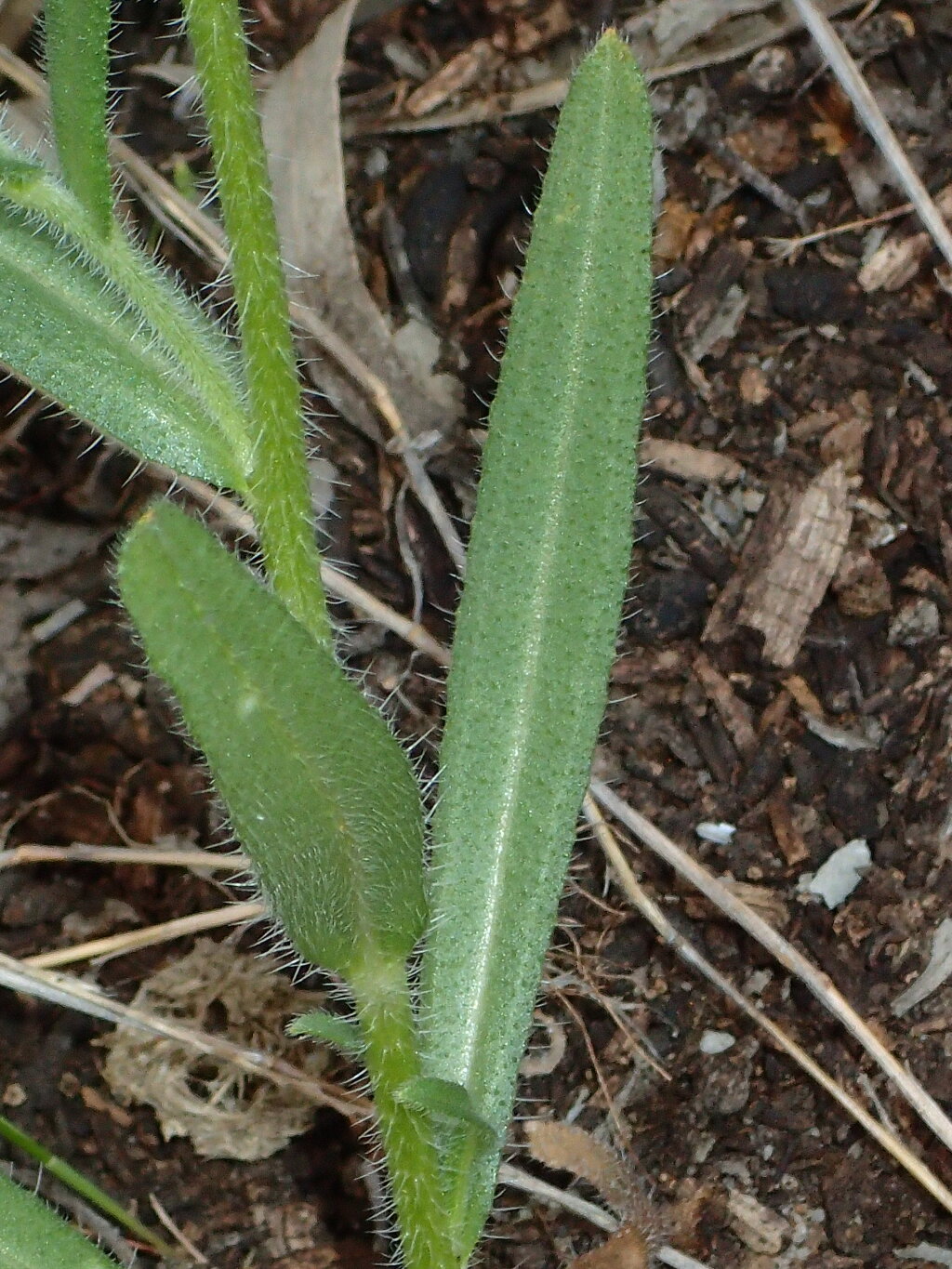Amsinckia
Annual herbs with a coarse indumentum of stiff spreading hairs. Rosette leaves petiolate, sheathing at base; cauline leaves alternate, sessile. Inflorescences terminal, of few-several simple monochasial scorpioid cymes; bracts usually absent. Flowers sessile (in Victoria) or shortly pedicellate; sepals 5 (in Victoria), rarely 3 or 4 due to fusion, scarcely connate basally, elongating with age; corolla regular, 5-lobed, more or less cylindric, usually glabrous, rarely with 5 saccate scales in throat, yellow to orange; stamens included in corolla-tube or in throat with tips of anthers exserted, anthers subsessile; ovary 4-lobed, 4-celled, style filiform, about as long as stamens, stigma capitate, 2-lobed. Fruit splitting into 4 mericarps, leaving a conical gynobase; mericarps ovoid, tapering to an apical point, ridged, rugose-tuberculate.
About 50 species, mostly in western North and South America; 4 species naturalised in Australia.
Much of the Australian material of this genus is intermediate between the described species and, therefore, difficult to determine with confidence. Most of these intergrades are probably due to hybridisation, although heterostyly and possibly apomixis may also contribute (Randell 1993).
The western North American Amsinckia spectabilis Fisch. & C.A. Mey. has been collected in a wheat crop near Kerang but is probably not naturalised there or elsewhere in the State. It is a spreading or decumbent annual with sparsely hispid stems, some 4-lobed calyces (by fusion) and much-exserted orange corollas.
Jeanes, J.A. (1999). Boraginaceae. In: Walsh, N.G.; Entwisle, T.J., Flora of Victoria Vol. 4, Cornaceae to Asteraceae, pp. 387–411. Inkata Press, Melbourne.
 Spinning
SpinningRandell, B.R. (1993). New taxa and combinations in the Boraginaceae. Journal of the Adelaide Botanic Gardens 15(2): 93–99.



